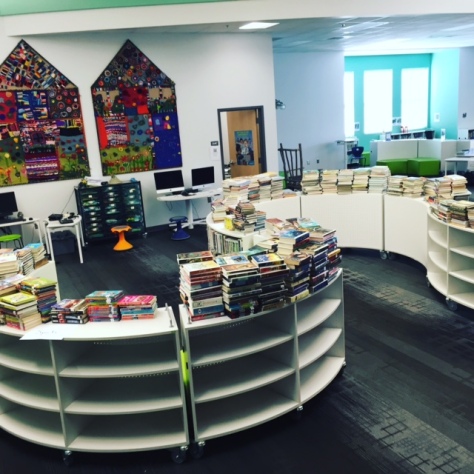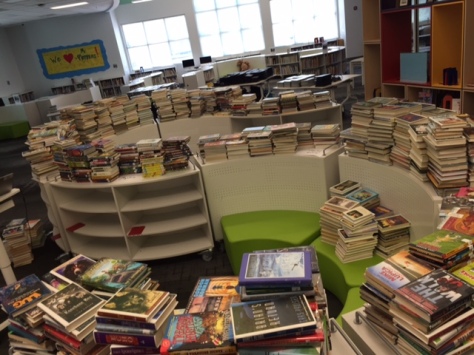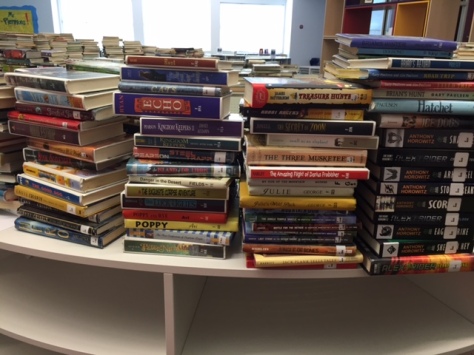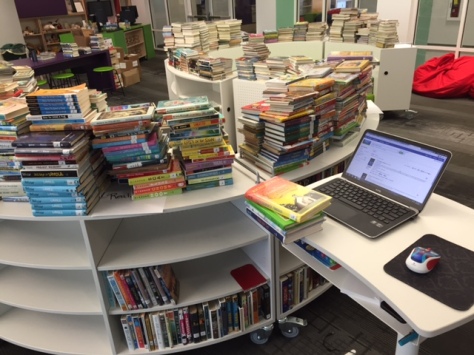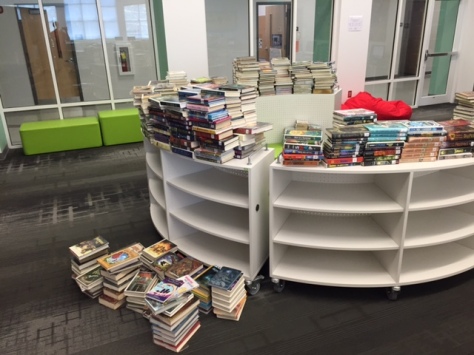
Our regular makerspace time is on break since UGA is out until spring semester. However, our students are still eager to come. This week I hosted a special holiday makerspace at a different time than our typical makerspace time. I created a Google doc and offered two 30-minute sessions for students in any grade to sign up to make holiday-inspired crafts using books weeded from our library collection.
Prior to the makerspace, I took several weeded books and ripped out pages. Volunteers and people walking into the library thought I had gone crazy, but I loved finding a new use for books that would likely go to recycling or sit unused in a box. Some pages I put in stacks and other pages I cut into strips.

The two crafts offered were paper chains and snowflake ornaments. The paper chains were pretty self explanatory. I just cut pages into strips so that students could create chains to use for Christmas trees or countdowns to whatever they hoped to countdown toward like Christmas, Hanukkah, a birthday, or something else.
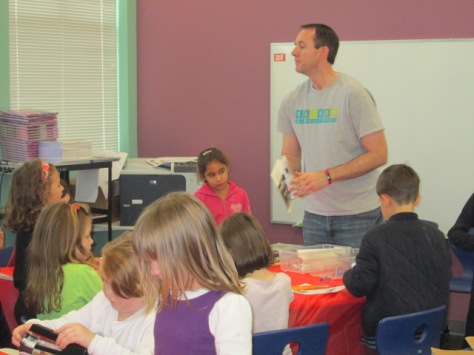
The snowflake ornaments took a bit more instruction.
- Students took two pages from books that were close to the same size.
- They folded them like you would fold a paper fan.
- They tied the middle of the fan fold with string so that it would unfold.
- They glued the ends of the folded fan so that it could unfold into the shape of a snowflake half.
- They took the two fanned out halves and glued them together
- They added a string for hanging on a tree or other special place

During the two sessions, I had a mix of 1st, 2nd, 4th, and 5th graders. The all arrived at different times, so we found ourselves constantly restarting instructions. The great thing was that in typical makerspace form, the students started to help one another. I gave instructions as I could, but then the students passed on knowledge to one another. The 1st graders needed the most support in tying string and folding paper, but other grades were very independent.


I was really glad that paper chains was a choice because it was easy for students to take on with little explanation. It was surprising to see how many students had never made a paper chain. The pages from books made some of the most beautiful chains I’ve seen. The ones I’ve made have always been from solid construction paper, and these had a bit of fashion and artistic vibes.
Our time was of course noisy, messy, and fun. We could have done this project for much longer than 30 minutes. If we hadn’t run out of time, we could have started exploring variations of the designs. Some students naturally started doing this but they just ran out of time. We also could have individualized the chains and ornaments even more with craft scissors, possibly glitter (if we were that adventurous, or combined some other materials from our maker cart.

I’m going to hold onto this idea and see where it takes us in the second half of the year or even next school year.








